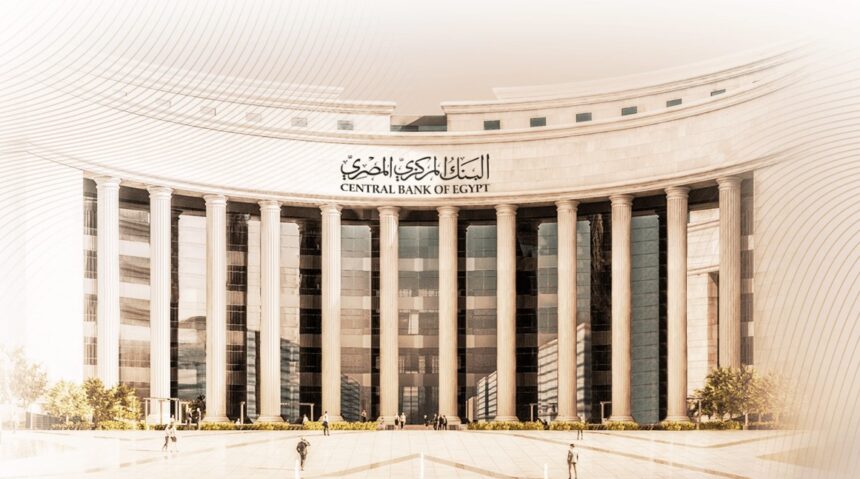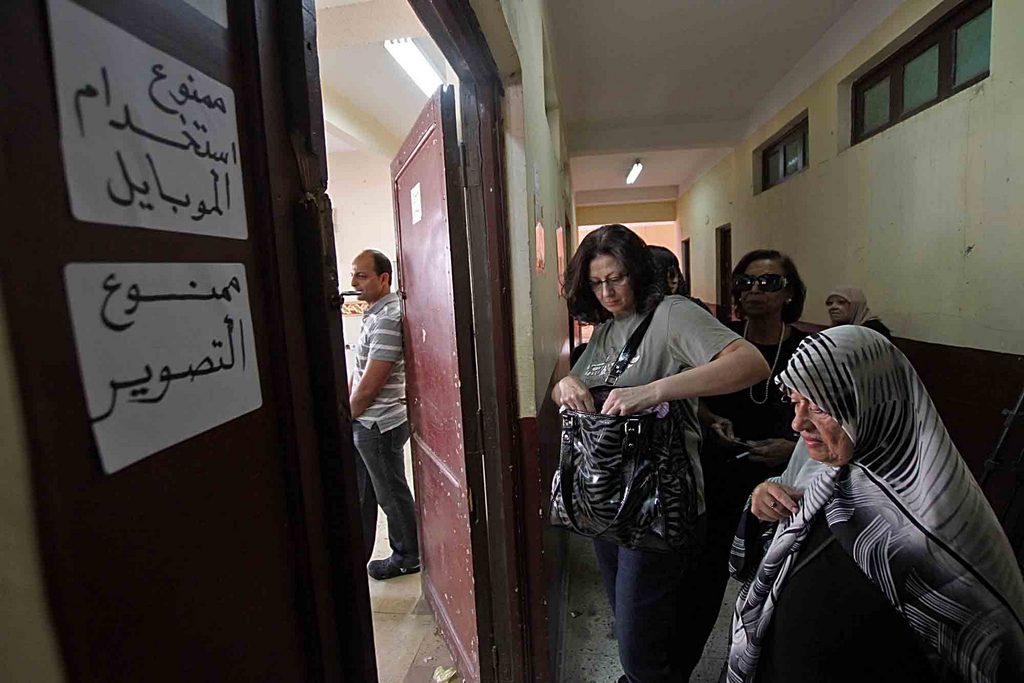The Central Bank of Egypt (CBE) has reaffirmed its central responsibility in maintaining financial stability and strengthening the resilience of Egypt’s banking sector against potential financial crises. Acting as the authority entrusted with the regulation, soundness, and supervision of banks, the CBE performs this role in cooperation with the Financial Regulatory Authority (FRA), which supervises the non-banking financial sector.
- Financial stability departments and comprehensive risk strategies
- Proactive risk assessment and coordination with other regulators
- Monitoring financial stability through specialised departments
- Macro risk monitoring: Protecting financial system as whole
- On-site supervision: Applying international best practices
- Off-site supervision: Data-driven early warning system
- Aggregated credit risk and customer data
- Combating money laundering and terrorism financing
- Fraud prevention in digital world
- Licensing and banking affairs
- Digital transformation and electronic banking services
According to details shared on its official website, the CBE carries out these responsibilities under the provisions of Law No. 194 of 2020 on the Central Bank and the Banking System. Its comprehensive mandate covers macroprudential risk management, crisis management, the resolution of troubled banks, and ensuring the reliability of payment systems and services, all of which are essential pillars of a stable financial system.
Financial stability departments and comprehensive risk strategies
Within this framework, the CBE’s financial stability departments design and implement integrated strategies and systems to identify and manage the full spectrum of risks facing the banking system, whether at the macro level or within individual institutions. These departments also develop mechanisms to prevent financial crises and prepare contingency plans to manage them effectively should they arise.
Their responsibilities include executing credit and banking policies aimed at strengthening supervision and applying precautionary measures that ensure the banking sector continues to play its essential role in providing finance and supporting economic growth. The CBE emphasised that these efforts are central to maintaining the resilience and soundness of Egypt’s financial system.
To achieve these objectives, the Bank uses a range of supervisory tools and procedures. These include participating in setting supervisory standards and controls that protect the financial positions of banks, assessing the effectiveness of credit supervision efforts, and ensuring the application of credit quality and financial soundness standards consistent with international best practices.
Proactive risk assessment and coordination with other regulators
The CBE’s responsibilities also extend to identifying and analysing emerging and potential risks resulting from banking services, operations, and activities. In this context, it proposes practical solutions and recommendations in coordination with other regulatory and supervisory bodies. The aim is to enhance cooperation, strengthen information sharing, and create an integrated and consistent regulatory environment that is better prepared to respond to challenges.
Moreover, the Bank proposes and develops policies related to licensing, risk assessment, anti-money laundering (AML), combating the financing of terrorism (CTF), fraud prevention, and other banking operations. It ensures that these policies align with Law No. 194 of 2020 and the regulatory instructions governing banking activities. At the same time, the CBE works to identify and monitor systemic risks using advanced analytical tools and prudential policy instruments, either to prevent these risks from materialising or to reduce their potential impact on financial system stability.
Monitoring financial stability through specialised departments
The mission of ensuring financial stability is carried out by several specialised departments within the CBE. These include Off-site Supervision, the Central Administration for Continuous Supervision, the Central Administration for Periodic Supervisory Reports, the Central Administration for Aggregated Credit Risk, and departments dedicated to AML/CTF supervision and fraud prevention. Other key departments include On-site Supervision, Banking Affairs, Licensing of Non-Banking Institutions, Digital Products and Services, and Macro Risk Monitoring.

Macro risk monitoring: Protecting financial system as whole
The CBE explained that its macro risk monitoring sector collaborates closely with other financial stability departments to establish and implement macroprudential policy. While the macro risk monitoring sector focuses on systemic risks that could threaten the stability of the entire financial system, the other departments implement microprudential policies designed to strengthen individual banks.
The macro risk monitoring sector analyses economic and financial developments both inside and outside Egypt, monitors risk trends affecting the banking and non-banking financial sectors, and detects early signs of systemic risk. If such risks are identified, macroprudential policy tools are activated to prevent or limit their effects on the stability of the financial system. This approach helps ensure the uninterrupted provision of credit to economic sectors and contributes to sustainable economic growth.
These efforts are backed by Law No. 194 of 2020, which grants the Central Bank the authority to formulate and implement macro risk management policy for the banking system.
On-site supervision: Applying international best practices
The CBE also carries out on-site supervision of banks and other entities under its oversight, following risk-based approaches that reflect international standards. The goal is to identify both current and future risks associated with each institution’s activities, assess the adequacy and effectiveness of risk management systems, and verify compliance with laws and supervisory instructions.
On-site supervision also evaluates governance frameworks, internal control systems, and the implementation of corrective measures to address signs of distress. In addition, it promotes banking awareness among employees, works with foreign supervisory authorities to exchange expertise, ensures compliance with international AML/CTF standards, and assesses financial positions, asset quality, and IT security.
The scope of on-site supervision is extensive, covering banks and their branches in Egypt and abroad, exchange companies, companies licensed to deal in foreign currency, credit information and rating agencies, money transfer companies, representative offices, credit risk guarantee firms, payment system operators, and payment service providers.
Field inspections are planned annually, taking into account the risk profile of each institution, its compliance with corrective actions, and any indicators of rising risk. This approach aligns with Article 146 of Law No. 194 of 2020. Field inspections may be comprehensive—covering all operations of an institution—or targeted, focusing on areas of heightened risk. Special assignments investigate specific transactions or practices at selected institutions, while follow-up missions verify the completion of required corrective measures.
The CBE emphasised that these inspection processes have evolved to keep pace with the rapid growth in electronic banking, the push for greater financial inclusion, and increased financing for small, medium, and micro enterprises.
Off-site supervision: Data-driven early warning system
Alongside field inspections, the CBE’s off-site supervision monitors the banking sector remotely using advanced analytical tools. This function aims to detect and analyse potential risks early and to allow the Bank to take proactive measures to maintain the sector’s stability. Off-site supervision follows international best practices and plays a central role in the CBE’s early warning system.
The off-site supervision function includes the Central Administration for Continuous Supervision, which uses relationship managers to continuously track the performance of banks and ensure compliance with laws and regulatory requirements. Meanwhile, the Central Administration for Periodic Supervisory Reports collects and processes data submitted by banks, producing reports that support decision-making by the Bank’s senior management and Board of Directors.
These reports are also shared with relevant local and international institutions, enhancing transparency and contributing to a deeper understanding of the banking sector’s health and performance.

Aggregated credit risk and customer data
The CBE also maintains a credit registration system that collects comprehensive credit, financial, and demographic data about clients, guarantors, and related parties who have obtained credit facilities. This database supports banks and credit providers in making informed decisions when granting, renewing, or amending credit, thereby reducing credit risk in the banking system.
Combating money laundering and terrorism financing
The CBE has established a dedicated department within its Off-site Supervision Sector to monitor and manage AML and CTF risks. This department ensures banks comply with national laws and international standards aimed at protecting the integrity of Egypt’s financial system.
Fraud prevention in digital world
Acknowledging the growing risks associated with fraud as a form of transnational organised crime, the CBE has created a specialised fraud prevention department. This department tracks emerging threats driven by rapid technological change and helps protect institutions and their customers from fraud-related losses.
Licensing and banking affairs
The CBE’s Banking Affairs Department is tasked with supervising the licensing of banks under Law No. 194 of 2020. It assesses applications to ensure that new banks and banking services meet all regulatory and supervisory requirements, contributing to the sector’s overall stability. This department plays a key role within the risk-based supervision process by evaluating banks’ readiness and performance before granting licences.
Digital transformation and electronic banking services
Reflecting the sector’s commitment to innovation, the Banking Affairs Department also licenses banks to provide electronic banking services. These include internet and mobile banking, electronic wallets, ATMs, and the issuance of debit, credit, prepaid, and contactless cards.
To ensure these services remain secure and in line with technological progress, the CBE continuously updates its regulatory frameworks. This work aims to protect the sector from unlicensed service providers and ensure that digital banking solutions meet both customer needs and security standards.
Through the combined efforts of its departments and the strategic use of macro and micro-level supervision, risk management, AML/CTF oversight, fraud prevention, and support for digital transformation, the Central Bank of Egypt underscores its commitment to maintaining the soundness and stability of Egypt’s banking sector and ensuring it remains resilient in the face of current and future financial challenges.



